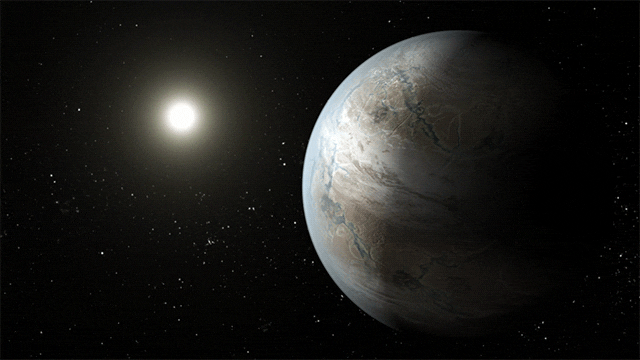AI Reveals Unsuspected Connections Hidden in the Complex Math Underlying Search

Artist’s concept of a sun-like star (left) and a rocky planet about 60% larger than Earth in orbit in the star’s habitable zone. Gravitational microlensing has the ability to detect such planetary systems and determine the masses and orbital distances, even though the planet itself is too dim to be seen. Credit: NASA Ames/JPL-Caltech/T. Pyle
Machine learning algorithm points to problems in mathematical theory for interpreting microlenses.
Artificial intelligence (AI) systems trained on real astronomical observations now surpass astronomers in filtering through massive amounts of data to find new exploding stars, identify new types of galaxies, and detect the mergers of massive stars, boosting the rate of new discovery in the world’s oldest science.
But a type of AI called machine learning can reveal something deeper, exoplanets when such planetary systems pass in front of a background star and briefly brighten it — a process known as gravitational microlensing — revealed that the decades-old theories now used to explain these observations are woefully incomplete.
In 1936, Albert Einstein himself used his new theory of general relativity to show how the light from a distant star can be bent by the gravity of a foreground star, not only brightening it as seen from Earth, but often splitting it into several points of light or distorting it into a ring, now called an Einstein ring. This is similar to the way a hand lens can focus and intensify light from the sun.
But when the foreground object is a star with a planet, the brightening over time — the light curve — is more complicated. What’s more, there are often multiple planetary orbits that can explain a given light curve equally well — so called degeneracies. That’s where humans simplified the math and missed the bigger picture.

Seen from Earth (left), a planetary system moving in front of a background star (source, right) distorts the light from that star, making it brighten as much as 10 or 100 times. Because both the star and exoplanet in the system bend the light from the background star, the masses and orbital parameters of the system can be ambiguous. An AI algorithm developed by UC Berkeley astronomers got around that problem, but it also pointed out errors in how astronomers have been interpreting the mathematics of gravitational microlensing. Credit:…
Read More: AI Reveals Unsuspected Connections Hidden in the Complex Math Underlying Search
